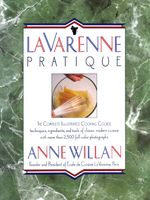Advertisement
Other Cured Meats
By Anne Willan
Published 1989
In the days before refrigeration when meat was a luxury, preservation methods needed to be as varied as possible. A family’s entire meat supply for a season might come from a single animal. Today we continue to cure meats partly for variety and partly because we value their special flavors. Some cured meats are a legacy from times when meat was survival food, for example African biltong, which consists of air-dried and smoked strips of beef, buffalo, venison, antelope or even ostrich. The American Indians made pemmican by powdering air-dried venison and making it into little cakes with melted fat and bitter berries. Similar examples are southeast Asian air-dried dendang and South American tassajo and chalona. The Spanish enjoy air-dried cecina and jamόn de toro. In the United States strips of sun-dried beef called beef jerky (from the Spanish-American word charqui) are still popular as a snack food. Humid climates often necessitate initial salting or soaking in brine to absorb the juices before the meat is dried. Germany’s speck and Norway’s spekemat are typical; these can be made of beef, game or even mutton smoked over fragrant woods.


